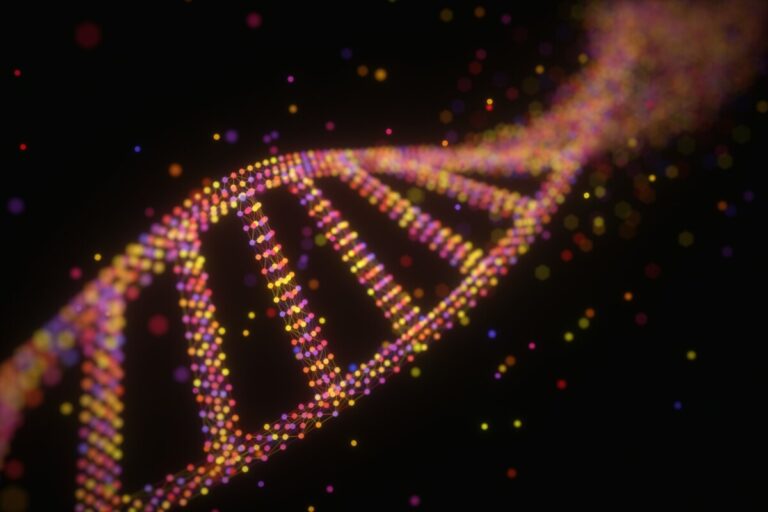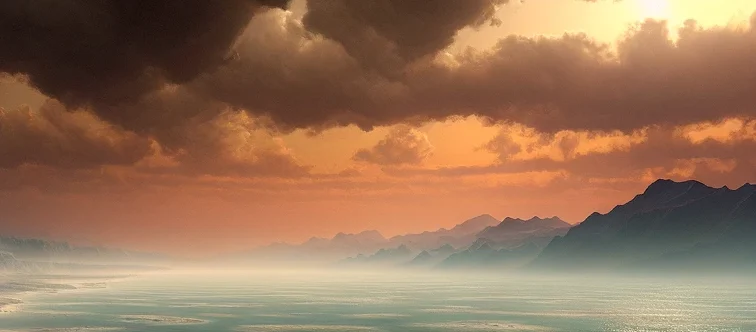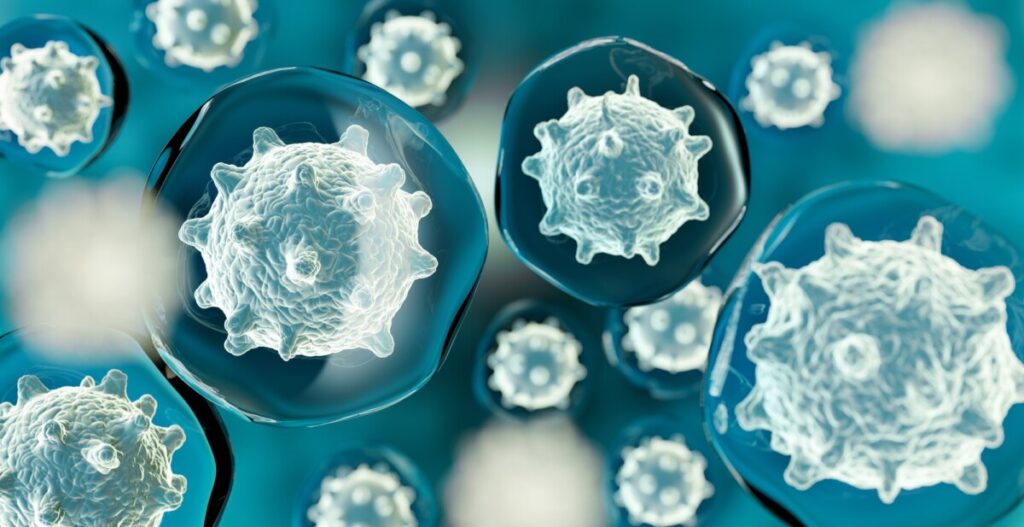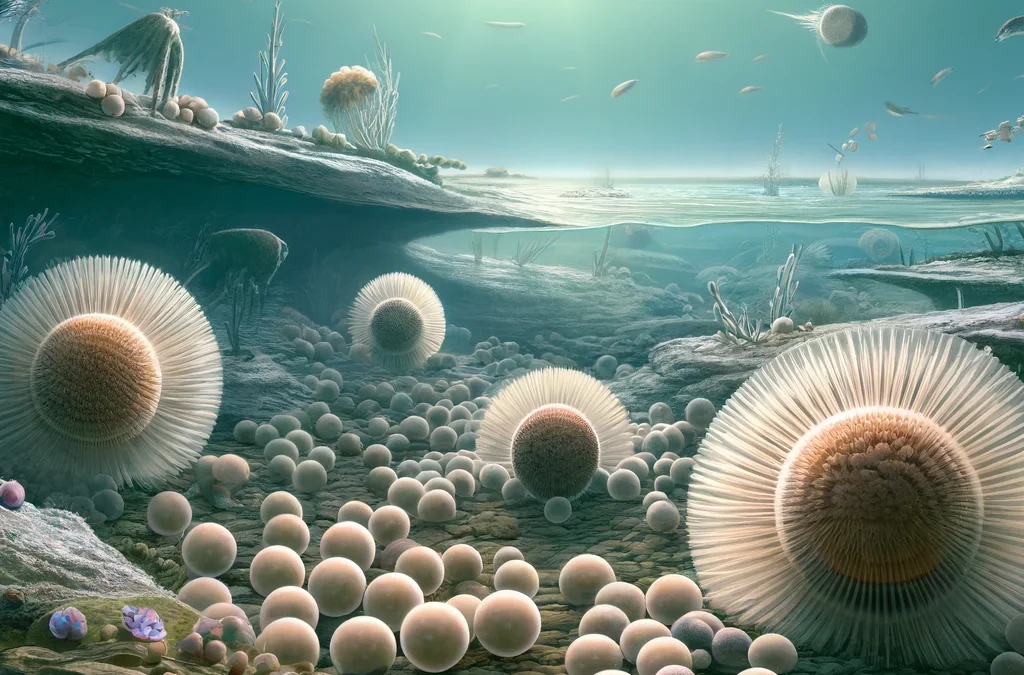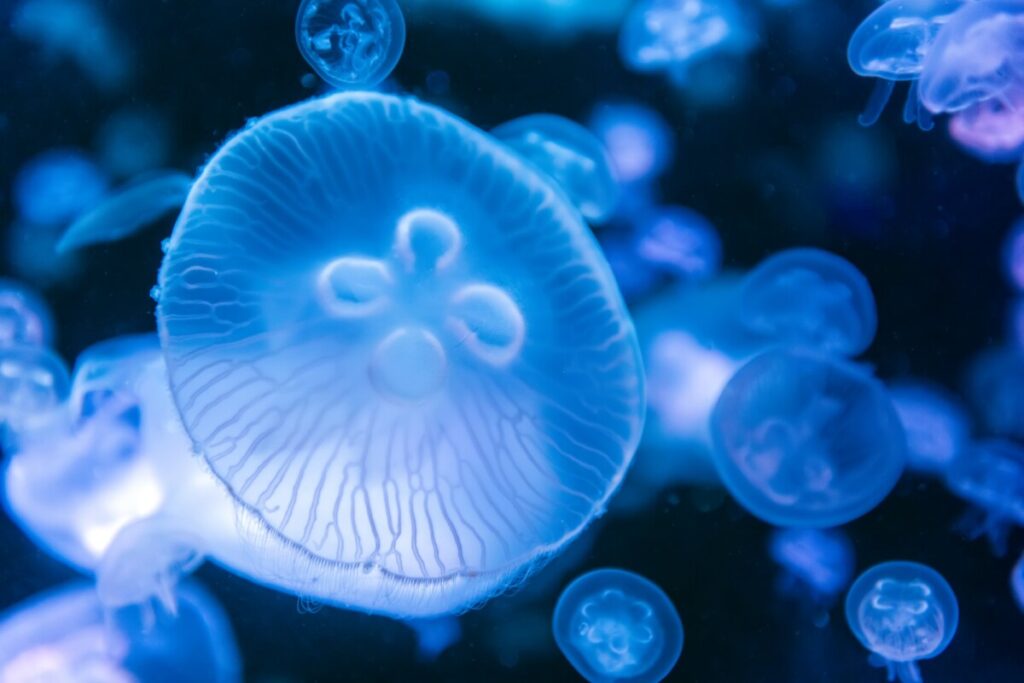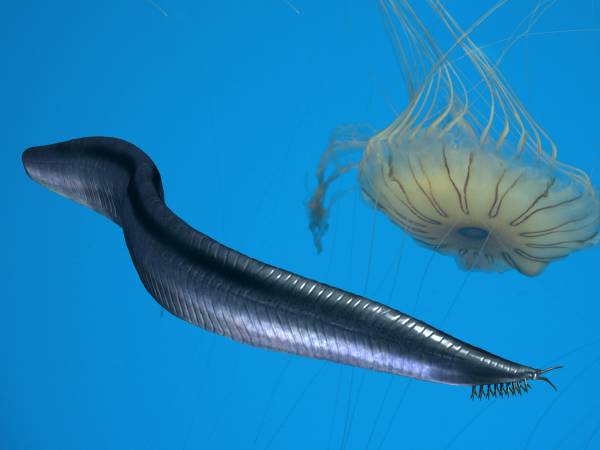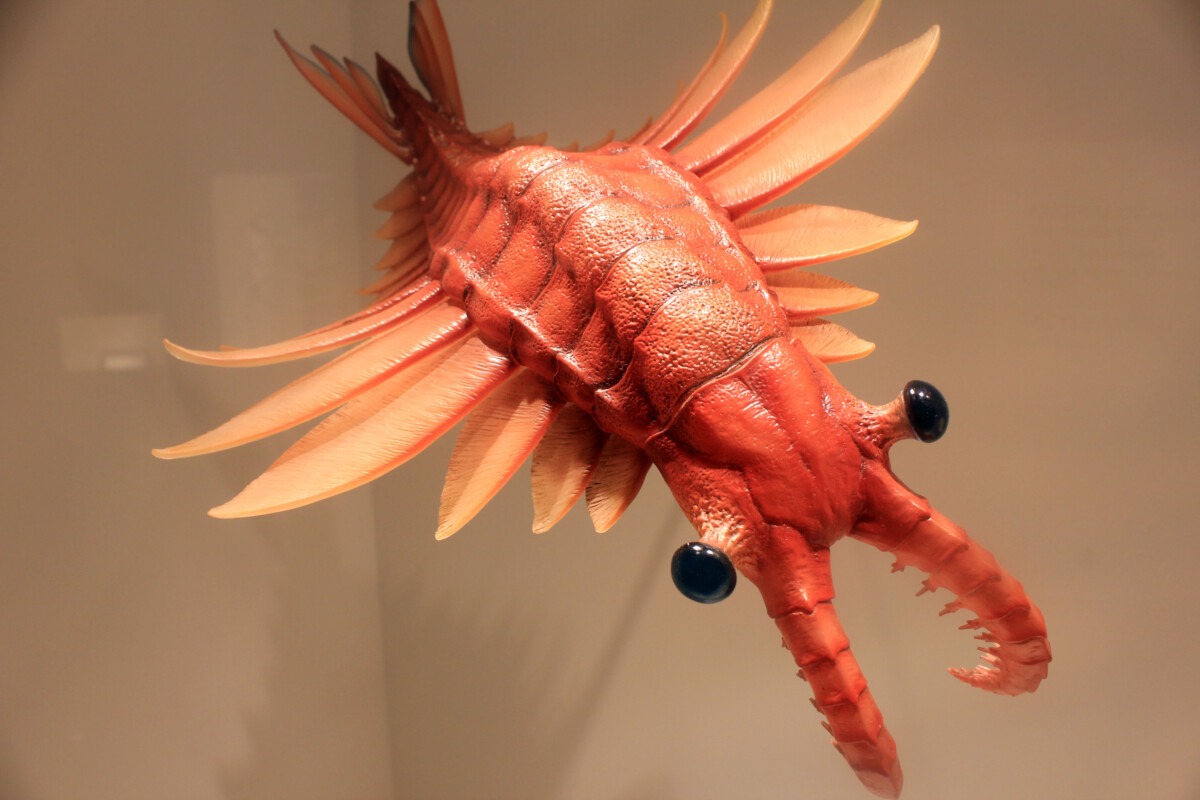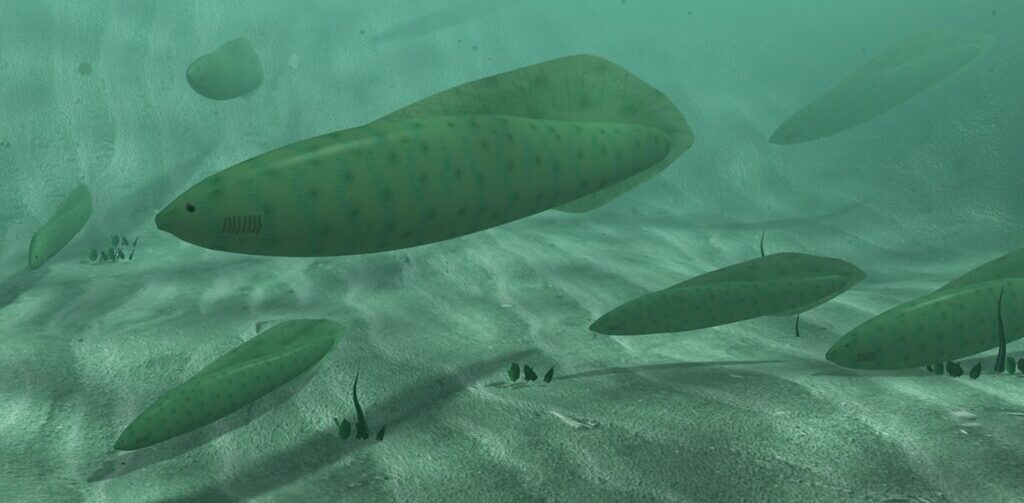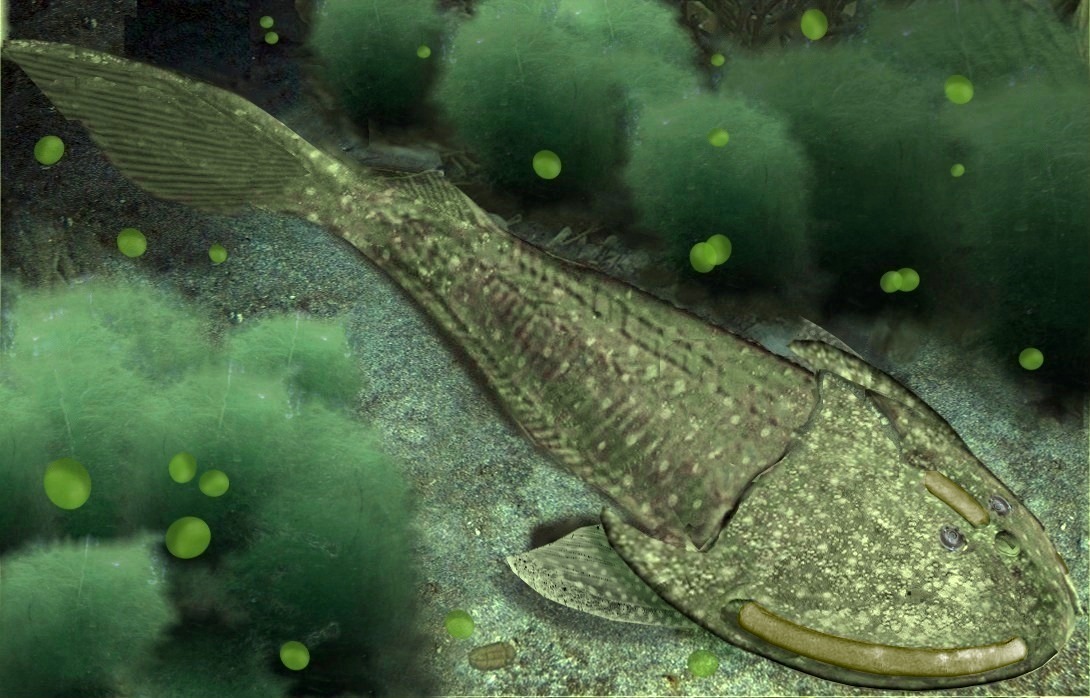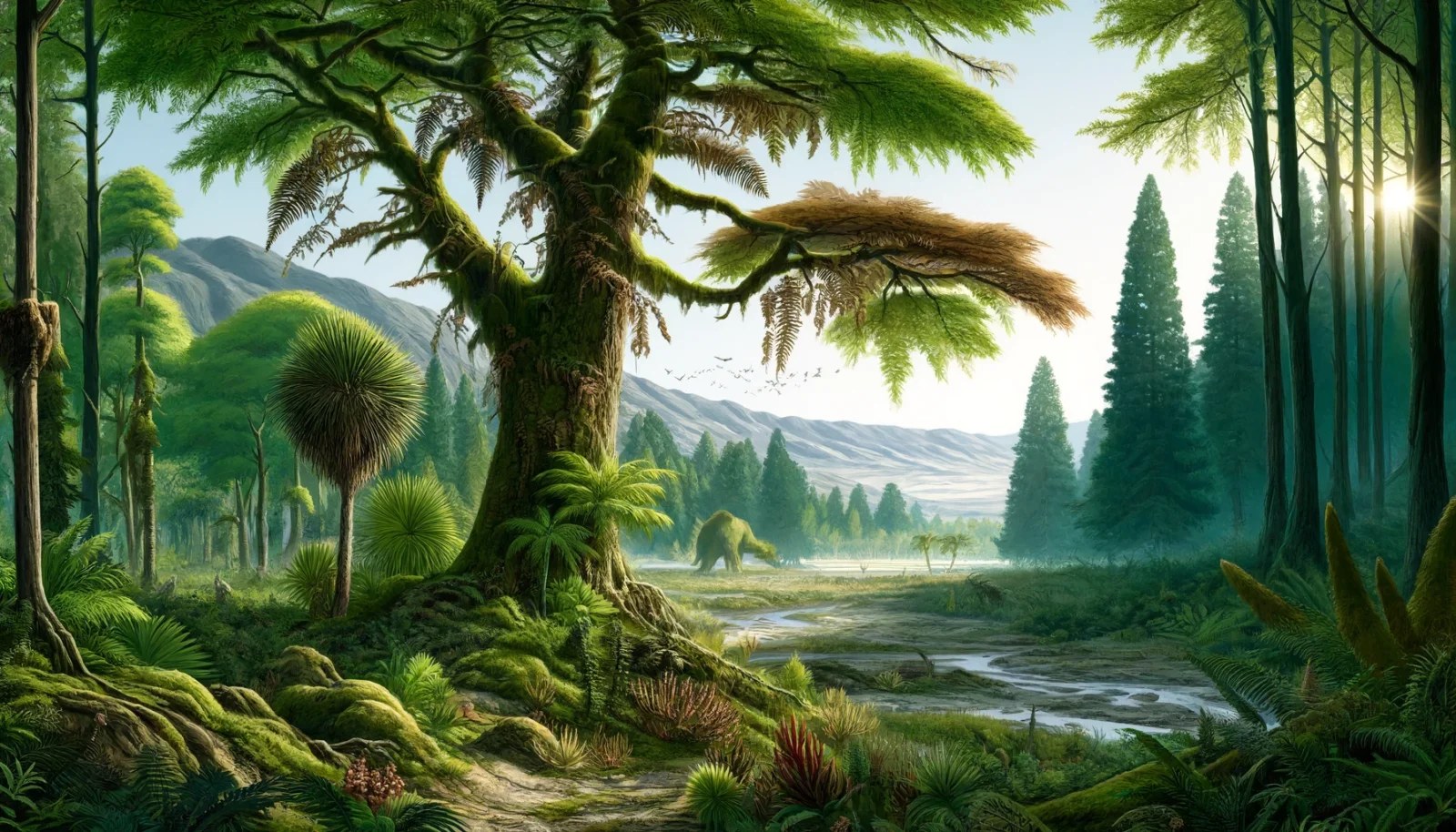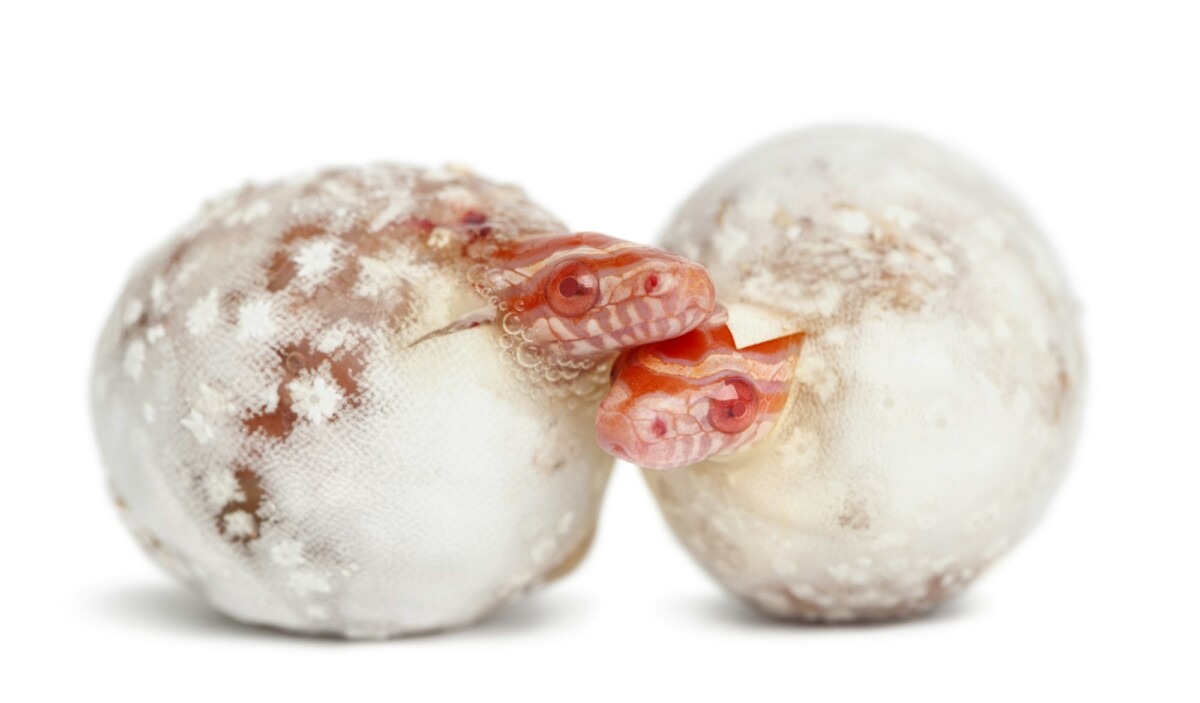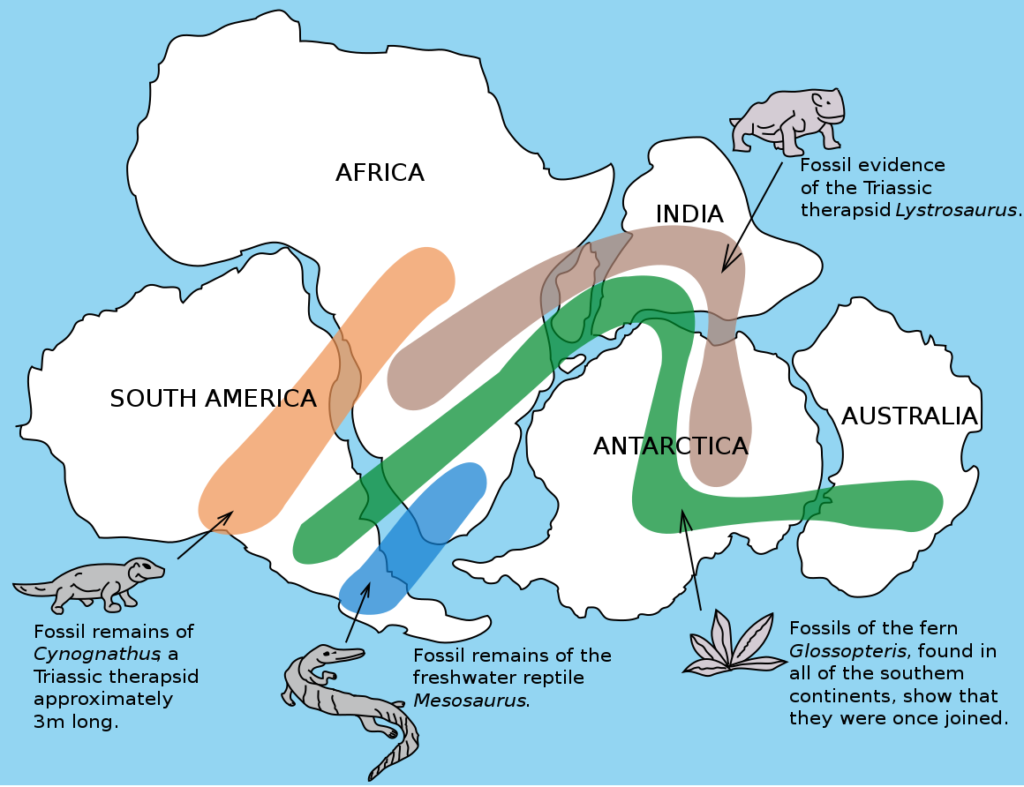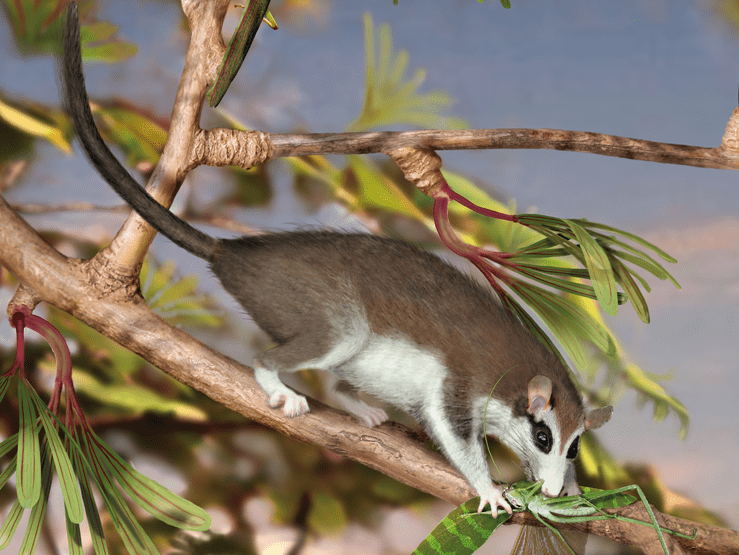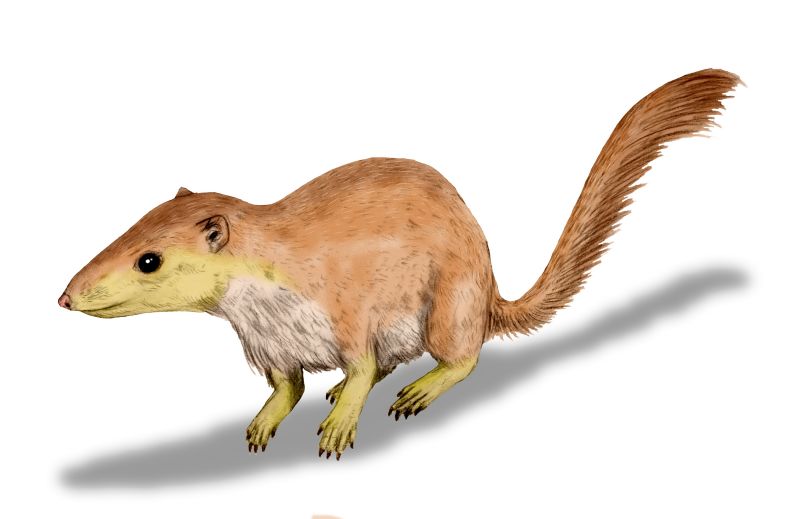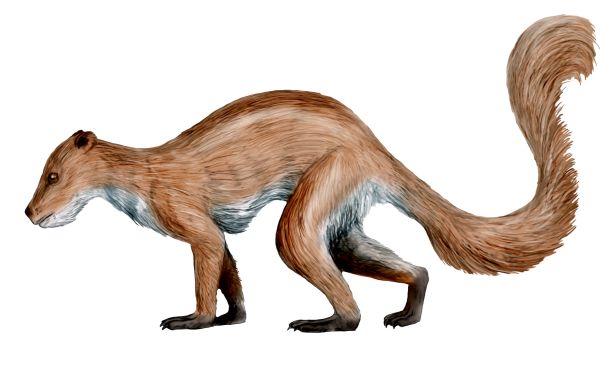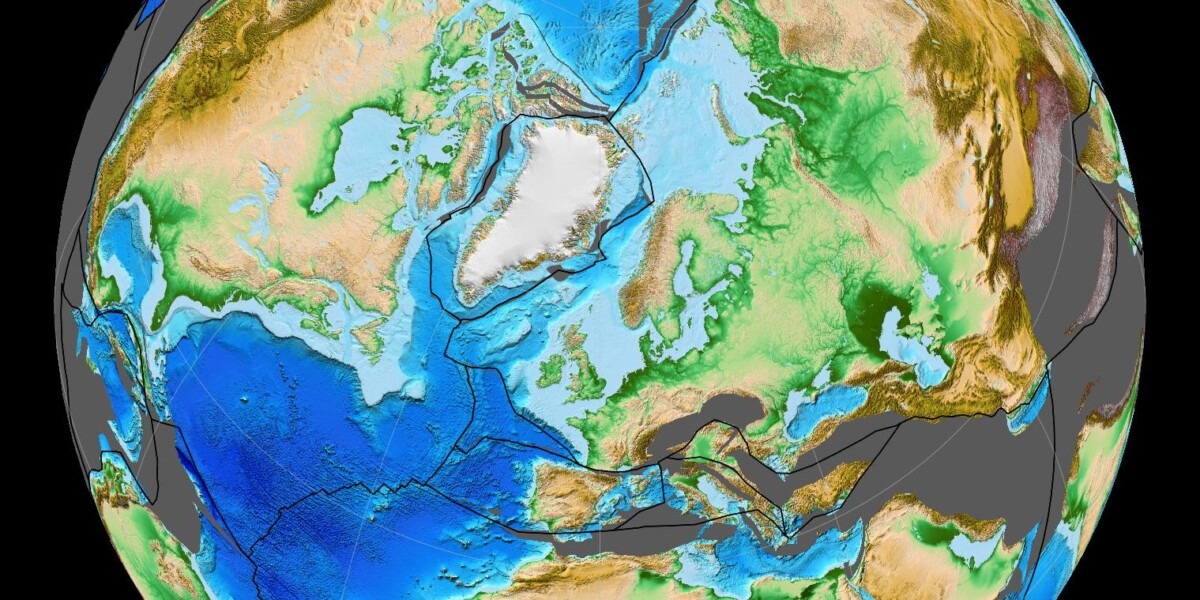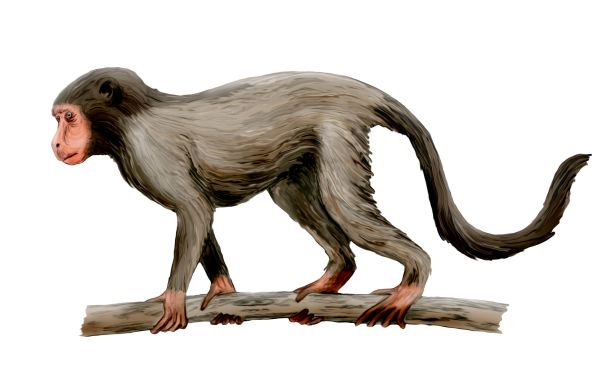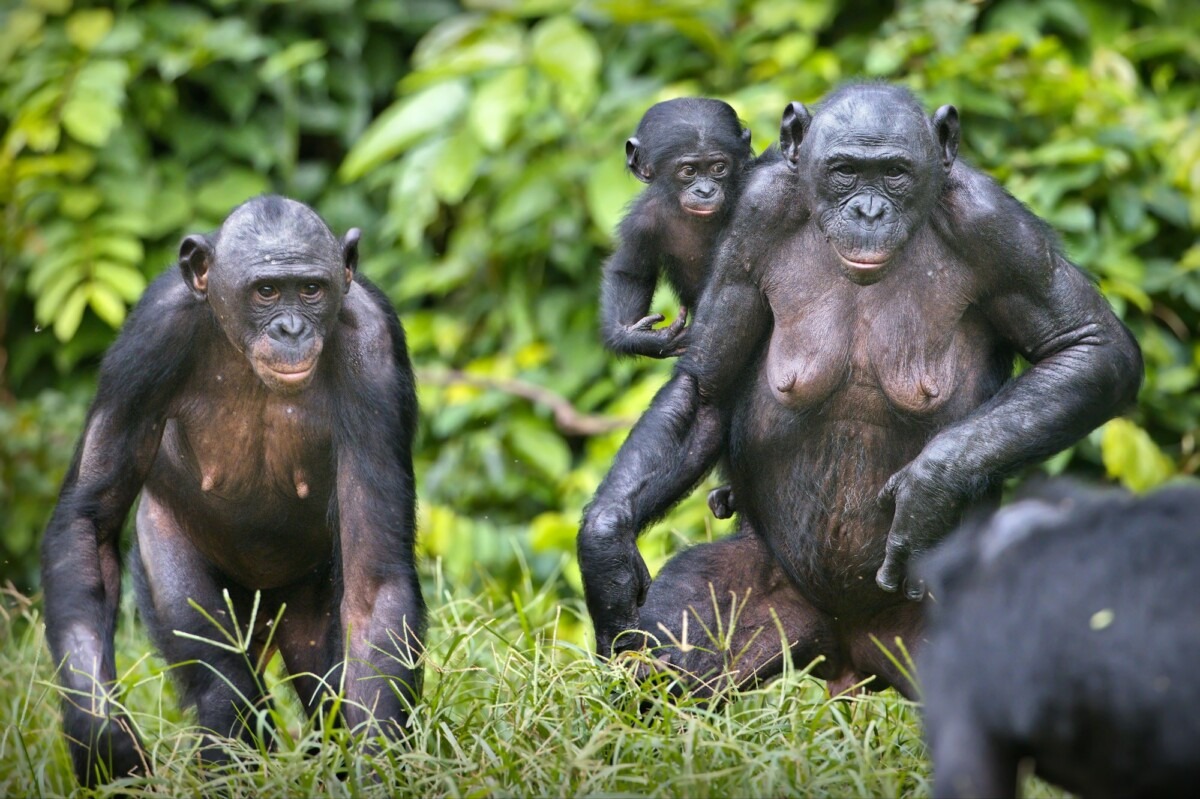Evolution TL: March to Life > Evolution > Great Apes > Human > Consciousness > All to Us
Evolution: This timeline of evolution brings some sense of perspective to the very long and complicated history of life on Earth. This timeline is intended to help with the big picture. This timeline brings together various scientific disciplines including plate tectonics, evolution, anthropology, and genetics. The process by which new species arise is well-understood, the evidence compelling and conclusive, our knowledge complete. We can read the fossil record like a book and on these pages we see changes gradually accumulate over millennia. Check out A Short Summary of Evolution for an introduction to how evolution works.
First DNA Life: From chemical reactions before 4 billion years ago to replicating molecules about 4 billion years ago to DNA based life then to LUCA, the only DNA based branch to survive. Meaning, DNA based life likely started before LUCA, and LUCA is the only branch to survive the test of time. From LUCA to humans, RNA and DNA are essentially the same as today. They serve as the tools for genetic information storage, transmission, and expression through prokaryotes to eukaryotes, underpinning the diversity and complexity of life on Earth. The last universal common ancestor (LUCA) is estimated to have lived approximately 3.5 to 3.8 billion years ago. It is the organism from which all current life on Earth descended from. Your greatest grandparents.
Imagined image: LUCA in a variety of shapes that they might have resembled, set in an ancient, deep-sea hydrothermal vent environment.
- Domain: Pre-Domain > Kingdom: Not applicable
(Common ancestor to the Bacteria, Archaea, and Eukaryota kingdoms)
The process of salination likely began soon after the oceans formed but took hundreds of millions of years to reach the salinity levels similar to what we see today. The oceans were likely significantly salty by about 3.5 billion years ago.
Salinity increased primarily through the weathering of rocks and the leaching of minerals (including salts) into the water. Rivers and streams carried these salts into the oceans. Volcanic activity also contributed ions to the seawater. Over time, as water cycled through evaporation and precipitation, salts became more concentrated in the oceans.
By about 2.5 Billion years ago, the oceans were likely had salinity levels similar to modern oceans.
The earliest known life on Earth are fossilized microorganisms found in hydrothermal vent precipitates. Currently dated to about 3.42 billion BCE. These microorganisms were prokaryote cells. Single celled organisms with no nucleus and had early simple DNA. More complex DNA in a nucleus evolved about 1.5 billion years later in Eukaryotic cells, circa 2 billion BCE.
- Domain: Bacteria or Archaea > Kingdom: Various
The Dawn of Photosynthesis and the Oxygenation of Earth: Around 2.4 billion years ago cyanobacteria emerged, the architects of the planet’s first photosynthetic processes. These microscopic prokaryotes harnessed the Sun’s energy, transforming it along with water and carbon dioxide into glucose and, crucially, oxygen. This period, known as the Great Oxidation Event, marked a dramatic increase in atmospheric oxygen levels, fundamentally altering the course of life’s evolution. Before this event, Earth’s atmosphere was largely devoid of oxygen, dominated instead by methane, ammonia, and other gases.
Most life on Earth today consumes the Sun’s energy directly or indirectly, but not all life. Plants consume the Sun’s energy directly, plant eaters indirectly, and meat eaters one more step away. In addition to this chain of food, some life on Earth do not consume the Sun’s energy at all. Instead they consume nutrients found in extreme environments. Food to them like hydrogen sulfide.

All life today are either Prokaryote or Eukaryote. Around 2 billion years ago, Eukaryotes evolved from Prokaryotes. The evolutionary leap to eukaryotes introduced cells with a nucleus and membrane-bound organelles, a complex architecture derived from prokaryotic predecessors through endosymbiosis. This process, crucial for eukaryotic evolution, involved the incorporation of prokaryotic cells into the cytoplasm of early eukaryotes, giving rise to essential organelles like mitochondria and chloroplasts.
Mitochondria are a key component of eukaryotic cells, contributing to their ability to generate energy more efficiently than prokaryotic cells
- Domain: Eukaryota > Kingdom: Protista (or ancestral eukaryotes)
GOE: The Great Oxidation Event started enriching the atmosphere with oxygen beginning around 2.4 billion years ago. It marked one of Earth’s most dramatic transformations. Initiated by the widespread activity of photosynthetic cyanobacteria, this period, known as the Great Oxidation Event, gradually saw the accumulation of oxygen that was initially absorbed by oceanic iron. As these iron sinks saturated, oxygen spilled into the atmosphere, paving the way for profound environmental and biological changes. The creation of an ozone layer, the oxygenation of the oceans, and the consequent rise of aerobic life forms set the stage for the later explosion of complex life on Earth, fundamentally altering the course of our planet’s history.
Breathable air to animals, including humans, started about 540 million years ago.
Around 1.7 billion years ago, a branch of protozoa, an advanced branch of the eukaryote cells, split into animals, plants, and fungi. These three separate lineages are the ancestors of modern plants, fungi and animals.
- 1.7 billion years ago: Plants diverge from the common protozoa ancestor.
- 1.5 billion years ago: Fungi and animal branch emerges.
- 1.3 billion years ago: Fungi diverge from the common fungi-animal ancestor.
Later animals evolve into the animal kingdom which includes mammals, birds, reptiles, amphibians, fish, insects, crustaceans, arachnids, echiniderms, worms, mollusks, and sponges.
- Domain: Eukaryota > Kingdom: Protista (or ancestral eukaryotes)
(New Kingdoms: Animalia, Plantae, and Fungi)
The movement of fluids, or circulation, evolved around 3.5 billion years ago in single-celled organisms to distribute nutrients and remove waste. Blood, a specialized fluid carrying nutrients and waste, evolved much later, around 1.2 billion years ago in multicellular organisms. It evolved to feed internal cells and carry away waste. As oxygen levels rose and multicellular life emerged, blood evolved to transport oxygen and nutrients to cells.
Sexual reproduction, genetic material from two parents, emerged as a fundamental evolutionary innovation of eukaryotes. The emergence of sexual reproduction in the Domain Eukaryota highlights the unique properties of eukaryotic cells. Eukaryotes have Complex Cell Structure, chromosomes within a nucleus, meiosis, a special type of cell division that reduces the chromosome number by half and creates genetic diversity, etc. This critical development enabled the mixing of genetic material, leading to increased genetic diversity and adaptability among early eukaryotic organisms, setting the stage for the complex tapestry of life that would eventually populate Earth.
- Domain: Eukaryota > Kingdom: Protista (protozoans and some algae)
(Later it evolved in the plantae and fungi kingdoms.)
Long before the complexity of full-fledged nervous systems, elaborate senses, and brains, life on Earth developed the basic ability to perceive and react to mechanical stimuli—a process known as cellular mechanosensitivity. A contemporary manifestation of this can be observed in the movement of some plants today, such as the Venus flytrap, which responds to touch by snapping shut to capture prey. This early form of proto-sensing, relying on signal transduction pathways within single-celled organisms, represents the precursor to the sophisticated sensory and nervous systems found in later multicellular life. Through mechanisms like ion channel activation and signal transduction cascades, these primitive organisms could respond to touch and pressure, paving the way for the evolutionary journey towards more advanced forms of perception. This foundational stage of sensory evolution, occurring as early as 800 million years ago, underscores the deep biological roots of our ability to sense and interact with the world around us.
- Domain: Eukaryota > Kingdom: Animalia > Phylum: Porifera (sponges)
Organisms that consist of more than one cell took several billion years to evolve from unicellular organisms. All species of animals, land plants and most fungi are multicellular, as well as many algae. A few organisms are partially both such as slime molds and social amoebae.
- Domain: Eukaryota > Kingdom: Animalia > Phylum: Porifera (sponges)
The evolution of egg-laying evolved before fish. It is thought to have developed with or shortly after the emergence of the first multicellular animals, around 640 million years ago.
- Kingdom: Animalia > Phylum: Porifera (sponges) and Cnidaria (jellyfish, corals, etc.)
Creatures of this time evolved into fish (us), jellyfish, cephlapods, and arthropods. In the deep waters of the late Precambrian era, the seeds of sentience were sown with the evolution of the earliest common ancestors to later cephalopods and fish. These primordial creatures, equipped with the most basic nervous systems, embarked on the path toward sensing and interacting with their surroundings in novel ways. Some of these species might have evolved some pre-brained memory, setting the foundational capabilities for interaction and adaptation within their environments. While far removed from the complex behaviors of their future descendants, these early organisms’ ability to respond to environmental cues marked the dawn of simple sentience in the animal kingdom. This pivotal moment laid the foundation for the intricate tapestry of life that would evolve, branching into the diverse forms of sentience observed in the animal world today.
Ediacaran biota (about 635 to 541 million years ago): By about 635 million years ago, clearly identified plant eaters evolved. Thriving in the oceans. Characterized by their unusual and diverse shapes, ranging from frond-like patterns to disk and tubular structures, the Ediacaran biota’s body plans defy easy comparison with modern life forms. The significance of the Ediacaran biota lies not just in their ancientness but in their representation of life’s experimental forays into multicellularity, offering clues to the evolutionary transition from simple microbial life to the complex organisms that would come to dominate the Earth. While we don’t know if this creature had a proto-nervous system, their existence set the stage for the Cambrian Explosion.
Chemoreception, the ability to detect chemical stimuli, likely emerged around 600 million years ago among some of the earliest soft-bodied multicellular organisms. This evolutionary leap did not necessarily require a proto- or pre-brain in the complex sense associated with later animals but rather relied on cellular mechanisms capable of processing chemical information. These early forms of chemoreception enabled organisms to make rudimentary distinctions necessary for survival, such as identifying nutritive substances versus harmful ones. They could “taste” potential food sources upon direct contact and “smell” chemicals dissolved in the water, guiding them towards nourishment or away from danger. These primitive sensory mechanisms laid the groundwork for the sophisticated development of taste and smell in more complex animals.
Kimberella (circa 560 Mya): The Kimberella, while not an ancestor of vertebrates, is a likely early example of a creature with chemoreception. It is potentially an early mollusk, and exemplifies the importance of chemoreception in early animal life. Its grazing on microbial mats would have necessitated a basic form of chemoreception to discern between nutritious and non-nutritious substances. The distinction between food sources implies an elementary ability to ‘taste’ and ‘smell,’ integral for selecting suitable food. This behavior marks a significant step in the evolutionary sophistication of sensory systems, foreshadowing the complex senses of taste and smell found in later species.
- Domain: Eukaryota > Kingdom: Animalia > Phylum: Bilateria or Mollusca
Through genetic analyses, scientists now believe the Comb Jellyfish is the earliest known true animal to evolve on Earth. Prior to this genetic analyses, simple sponges were thought to have evolved first.
- Kingdom: Animalia > Phylum: Ctenophora > Class: Tentaculata
Vision evolved as early as 540 million years ago during the Cambrian explosion. The ability to see, alongside the development of hearing, provided organisms with the evolutionary advantage of sensing their environment from a distance. This sensory evolution necessitated the development of larger brains for the complex processing of visual data, marking a pivotal moment in the cognitive evolution of life.
Pikaia Gracilens (520 to 505 Mya): In the ancient seas of the Middle Cambrian, starting around 520 million years ago, Pikaia gracilens swam into the annals of evolutionary history as one of the earliest known chordates, a group that would eventually give rise to vertebrates, including fish and, much later, humans. Measuring up to 6 centimeters in length, Pikaia boasted a series of notable features for its time, including a notochord—a flexible rod running along its back, which would become the backbone in its vertebrate descendants—and rudimentary structures suggesting the early development of a circulatory and nervous system. While Pikaia itself lacked well-defined eyes, its place in the evolutionary lineage hints at the beginnings of the complex sensory organs that would become eyes in later vertebrates.
First Brains: By about 520 million years ago, hunters roamed the seas. In the Cambrian explosion, a period of rapid evolutionary development that began around 541 million years ago, the earliest known animals with structures recognizable as brains made their debut in the Earth’s oceans. They possessed rudimentary beginnings central nervous systems, including a brain. This allowed for advanced sensory processing, decision-making, and coordinated movement.
Anomalocaris (518 to 500 Million Years Ago): Among these early pioneers, creatures like Anomalocaris canadensis stand out. During the Cambrian Period, the Anomalocaris was a formidable predator of the seas. It reached lengths of up to three feet. With its large, compound eyes, flexible, segmented body, and a pair of grasping appendages in front of its mouth, it was perfectly adapted to detect and capture prey. Anomalocaris swam the ancient oceans with undulating movements, using its circular mouth lined with serrated plates to consume trilobites and other early marine animals.
- Kingdom: Animalia > Phylum: Arthropoda > Class: Dinocaridida
From no sentience or presentience to solidly “Simple Sentience,” early fish during this time represent our ancestral beings that started to suffer and feel the dichotomy of pleasure and pain.
Haikouichthys (circa 520 Million Years Ago): Dwelling in the ancient seas of the Cambrian period, Haikouichthys is among the earliest forms of vertebrate life, showcasing fundamental advancements in the complexity of the nervous system. Unlike its precursors in the Ediacaran period, which exhibited only the most rudimentary forms of interaction with their environment, Haikouichthys possessed a more developed nervous system, allowing for more nuanced responses to stimuli. This development marks a significant evolutionary leap towards the ability to experience basic forms of what we might consider suffering and pleasure. Its existence underscores a pivotal transition in the evolution of life, bridging the gap between the simplicity of early multicellular organisms and the complexity required for the nuanced experiences of sentience.
- Phylum: Chordata > Class: Agnatha (jawless fish)
Nectocaris pteryx lived during the Middle Cambrian period, approximately 508 to 505 million years ago. From presentient animals branched cephalopods and fish. Both later evolved Simple Sentience. An example of convergent evolution that might suggest sentience is one of the natural stepping stones of life.
The Cambrian and subsequent periods saw the emergence of early cephalopods, ancestors to modern octopuses, squids, and cuttlefish. These ancient cephalopods, navigating the Cambrian seas, possessed a more developed nervous system compared to many contemporaneous organisms, capable of processing information from their environment in sophisticated ways. This evolutionary development marked a significant leap towards simple sentience, with early cephalopods able to exhibit behaviors such as hunting strategies, escaping predators, and possibly even social interactions. The evolution of these early cephalopods highlights a pivotal moment in the history of life, demonstrating the beginnings of nervous system sophistication that would eventually lead to the complex forms of sentience observed in higher animals, including humans.
These early scales provided a vital protective layer, acting like underwater armor against predators, abrasions, and environmental threats. The keratin genes that led to scales are an interesting part of our story. When amphibians evolved onto land, scales near the tips of their evolving toes transformed into thicker protection and traction, eventually giving rise to claws, nails, and hooves. Meanwhile, cold temperatures and sun exposure led to the development of warming and protective traits like feathers, fur, and hair. Specialized “scales” evolved into horns in various species, such as triceratops and rhinos, despite their unrelated lineage. Additionally, keratin genes influenced the formation of beaks in birds. All these diverse traits originated from the same keratin genes.
The millipede Pneumodesmus newmani is the oldest air-breathing animal known to date. This ancient denizen of the Scottish waters once roamed the Earth during the early Silurian era. The millipede likely supplemented its oxygen intake through air as well as using its gills while in water.
- Kingdom: Animalia > Phylum: Arthropoda > Class: Diplopoda (millipedes)
The Dawn of Lungs: In the oxygen-poor waters of the Devonian period, roughly 400 million years ago, or a bit earlier. It was a significant evolutionary leap. A group known as Sarcopterygii were presentd with a formidable challenge in ancient waters that were shallow and variable. It was here that the first lungs emerged. Evolving from structures akin to modern fish’s swim bladders, these early lungs enabled them to extract oxygen directly from the air. This innovation marked a pivotal moment , setting the stage for land vertebrates.

The Legacy of the Lungfish: Descended from them, the lungfish epitomize the resilience and adaptability of life. Presently represented by six species across Africa, South America, and Australia, lungfish possess both gills and well-developed lungs, enabling them to survive in environments that would be inhospitable to other fish. During dry seasons, some lungfish can aestivate in mud, breathing air through their lungs until water returns.
Trees actually breath. Well, technically they grow a bit more at night and tend to shrink a tiny bit during the day in a process called “diurnal stem extension,” which I like to think is analogous to breathing or a heartbeat.
- Domain: Eukaryota > Kingdom: Plantae > Phylum: Tracheophyta (vascular plants)
Long-Term Memory: By about 375 million years ago, the foundations for long-term memory were likely established among the more complex vertebrates, facilitating survival in increasingly varied and challenging environments.
Tiktaalik is a prime example of this evolutionary milestone. It is an extraordinary creature that bridged the gap between aquatic fish and amphibians. With its forward-facing eyes—an adaptation indicative of its predatory lifestyle, it navigated both the waters and the emerging land habitats. This semi-aquatic way of life, combining elements of both aquatic and terrestrial existence, would have necessitated the use of long-term memory for tasks such as remembering the locations of feeding sites, water bodies, and safe paths between them. Its adaptations, including limbs capable of supporting its weight on land, suggest a complex lifestyle that likely benefited from the development of long-term memory, enabling it to exploit the resources of both realms effectively.
- Kingdom: Animalia > Phylum: Chordata > Class: Sarcopterygii (lobe-finned fishes)
Hearing, which initially appeared in early fish, underwent a remarkable transformation as vertebrates transitioned to terrestrial life a bit after 400 million years ago. Early forms of hearing involved simple pressure-sensitive cells that could detect vibrations in water. As amphibians moved onto land, rudimentary hearing evolved into processing airborne sound. This transition further drove the need for enhanced brain capacity to process increasingly complex sensory information.
Acanthostega (circa 365 Mya): Hearing, a critical evolutionary advancement, underwent significant changes as vertebrates transitioned from aquatic to terrestrial environments. While the earliest forms of hearing evolved in water, allowing organisms to detect vibrations through their bodies, the move onto land posed new challenges and opportunities for auditory systems. Acanthostega, an early amphibian, exemplifies this transition. This period marks a crucial phase in the development of auditory systems capable of detecting a broader range of sounds, setting the stage for the complex hearing abilities observed in later terrestrial vertebrates.
Phylum: Chordata > Subphylum: Vertebrata > Class: Sarcopterygii (Lobe-finned fishes)
After about 320 million years, the next significant leap in egg evolution came with reptiles, which developed amniotic eggs. These eggs have a protective shell and specialized membranes to support development outside of water, enabling reptiles to lay eggs in terrestrial environments.
Both reptiles and our ancestor synapsids evolved from amphibians. While reptiles evolved better amniotic eggs, synapsid eggs were like amphibian eggs. Synapsid’s birthing process eventually led to mammalian live births. These are the animals that evolved Complex Sentience, the ability to feel various emotions. While it is unknown when this complex spectrum fully evolved, it is defined as the ability to suffer and feel the dichotomy of pleasure and pain. Dimetrodon is an example of a meat eater, which if any of our ancestors were meat eaters. Although not a While dimetrodons were not direct ancestor of mammals, our mammalian ancestors might have been similar to our direct-line ancestors around this time.
Class: Synapsids (pre-mammal, not a dinosaur, not pre-dinosaur)
Evolution: Amphibians > Amniotes > Early Reptiles > Synapsids
Time Period: Late Triassic to Early Jurassic; 295-272 Mya; Diet: Carnivore
The Ginkgo biloba, prominently featured in this image, stands as a testament to the resilience and persistence of nature. Its unique fan-shaped leaves, characterized by radiating veins, mark it as a “living fossil,” a term that reflects its ancient origins and relatively unchanged form over millions of years. These leaves first appeared during the Permian period, a time when the landscape was dominated by coniferous trees and early reptiles, setting the stage for the Ginkgo biloba’s long evolutionary journey. The depiction emphasizes the transition from simpler, primitive leaves to the more specialized flabellate leaves of the Ginkgo, illustrating a significant evolutionary development in plant life.
By dating rocks and fossils scientists can document the movement of the continents over time.
To confirm and refine this science, geologists study rocks, paleontologists study fossils, and anthropologists study human societies, cultures, and relics. The location and dating of rocks, fossils, and relics allow us to understand the distant past.
- Cynognathus, circa 242 million BCE
- Lystrosaurus, circa 250 million BCE
- Glossopteris, circa 275 million BCE
- Mesosaurus, circa 285 million BCE
As the Permian period waned around 299 to 252 million years ago, the Earth’s climates became increasingly arid, fostering the evolution of plant adaptations suited for water conservation. Among these adaptations was the emergence of true pine needles, characteristic of early conifers. These needle-like leaves, with their narrow, waxy surfaces, were crucial in minimizing water loss, a vital trait in the challenging Permian environments. As the planet transitioned into the Triassic period (about 252 to 201 million years ago), these early conifers diversified and spread, forming dense forests that featured a variety of conifer species with distinct pine needles. This marked a significant evolutionary step, enabling conifers to dominate many landscapes and setting the stage for the later proliferation of these resilient trees during the Mesozoic era.
The closest known ancestor of Nyasasaurus parringtoni before its appearance is likely to be found among the Dinosauromorpha, a clade that includes dinosaurs and their immediate precursors. One of the most well-known early dinosauromorphs is Asilisaurus kongwe, which lived around 245 million years ago in what is now Tanzania. Asilisaurus exhibits several characteristics that are intermediate between earlier archosaurs (the group that includes all dinosaurs, crocodiles, and birds) and true dinosaurs. These early dinosauromorphs provide critical insights into the evolutionary steps that led to the rise of dinosaurs.
Phylum: Chordata > Class: Reptilia > Order: Saurischia (Clade: Dinosauria)
Evolution: Amphibians > Amniotes > Early Reptiles > Dinosauriform
The earliest known dinosaur is Nyasasaurus parringtoni, which lived during the Middle Triassic period, around 243 million years ago. Discovered in Tanzania, Nyasasaurus represents a key transitional form, showcasing features that are both dinosaurian and pre-dinosaurian, highlighting the evolutionary path leading to more well-known dinosaurs of the Late Triassic and beyond. This discovery pushes back the origin of dinosaurs by approximately 10 to 15 million years earlier than previously thought, providing crucial insights into the early evolution of these remarkable creatures.
- Kingdom: Animalia > Phylum: Chordata > Class: Reptilia > Saurischia (or Ornithischia)
(Clade: Dinosauria)
Around 240 million years ago, during the late Triassic period, a crucial evolutionary development unfolded within the lineage that would give rise to mammals. It is believed that the XX/XY sex-determination system emerged in a common ancestor of mammals, possibly within the genus Therapsida, a group of synapsids that exhibited both reptilian and mammalian traits. This innovation in genetic sex determination provided a reliable mechanism for differentiating male and female individuals based on the presence of the Y chromosome, which carries the SRY gene responsible for initiating male development. This advancement played a pivotal role in the diversification and success of early mammalian ancestors.
While the XX/XY system is prevalent in mammals, it is not exclusive to them, and it evolved independently in different animal groups. Some reptiles, such as certain species of lizards and snakes, as well as some fish, including the medaka (Japanese rice fish), also employ this genetic mechanism for sex determination. However, in mammals, this system is universal. From tiny rodents to massive elephants, all mammals utilize the XX/XY system, ensuring males carry one X and one Y chromosome (XY), while females carry two X chromosomes (XX). This consistency has allowed mammals to thrive in a variety of environments, contributing to their evolutionary success. Even in monotremes like the platypus, which exhibit a more complex array of sex chromosomes, the fundamental principles of the XX/XY system are still at play, highlighting the enduring legacy of this ancient genetic innovation.
References
- XX/XY Sex-Determination System in Mammals: Graves, J.A.M. (2006). “Sex Chromosome Specialization and Degeneration in Mammals.” Cell, 124(5), 901-914. doi:10.1016/j.cell.2006.02.023.
- Evolution of the XX/XY System: Bachtrog, D., Kirkpatrick, M., Mank, J.E., McDaniel, S.F., Pires, J.C., Rice, W., & Valenzuela, N. (2011). “Are all sex chromosomes created equal?” Trends in Genetics, 27(9), 350-357. doi:10.1016/j.tig.2011.05.005.
- Sex-Determination Systems in Reptiles and Fish: Ezaz, T., Sarre, S.D., & Georges, A. (2009). “Evolution of Sex Determination in Reptiles.” Sexual Development, 3(2-3), 109-117. doi:10.1159/000223073.
- Complex Sex Chromosomes in Monotremes: Grützner, F., Rens, W., Tsend-Ayush, E., El-Mogharbel, N., O’Brien, P.C.M., Jones, R.C., Ferguson-Smith, M.A., & Graves, J.A.M. (2004). “In the platypus a meiotic chain of ten sex chromosomes shares genes with the bird Z and mammal X chromosomes.” Nature, 432, 913-917. doi:10.1038/nature03021


Before dinosauromorphs like Asilisaurus, the evolutionary lineage would include earlier archosaurs. One such early archosaur is Marasuchus lilloensis, which lived around 240 million years ago. Marasuchus exhibits several primitive features that are on the evolutionary path towards dinosaurs.
- Kingdom: Animalia > Phylum: Chordata > Class: Reptilia > Order: Dinosauriformes
- 30 to 40 cm (12 to 16 inches)
- Found in Argentina, South America
- primarily bipedal
- carnivore
Morganucodon is an example of a plant eater likely similar to our direct-line ancestors around this time. It is not a direct human ancestor but is among the early mammaliaforms, close to the lineage leading to true mammals. It likely had a varied diet, but its inclusion here highlights the transition towards more specialized mammalian diets from the broader reptilian ones.
Evolution: Amphibians > Amniotes > Synapsids > Mammalia
Class: Mammaliaforms or maybe Synapsida
Time Period: Late Triassic to Early Jurassic
Diet: Likely Herbivore
An example of early live birth is the protomammal Kayentatherium, Jurassic period. This cynodont is related to early mammals and its clutch size suggested egg-laying, providing clues about the transition to live birth. The switch to live birth in mammals, including marsupials and placentals, likely evolved once at their common ancestor, suggesting live birth in mammals has a deep evolutionary history.
This image showcases the intricate leaf structures of modern trees, specifically highlighting the leaves of the Maple and Oak. These species represent the evolutionary pinnacle of leaf development, featuring complex, highly branched vascular systems that optimize photosynthesis and water management. Maples, with their characteristic palmate leaves, and Oaks, with their lobed leaves, exemplify the diversity and adaptability of modern angiosperms. Set against a backdrop of a Cretaceous landscape, replete with flowering bushes and early birds, this image captures the dynamic interplay of evolution that has sculpted the form and function of contemporary tree leaves.


While the earliest fossils we have place the first flowers at about 130 million years ago, they likely evolved earlier. How much earlier is still under research. Recent molecular analysis suggests that the origins of flowering plants might extend back to between 149 and 256 million years ago. This type of research looks at the evolutionary relationships and timing. Stay tuned!
For sure, during the Cretaceous period, around 130 million years ago, the first simple flowers began to bloom. They were likely brown or green because they used wind, not insects, for pollination. These early angiosperms, or flowering plants, marked a significant evolutionary leap in the plant kingdom. They evolved from gymnosperms, a group of seed-producing plants that includes conifers. The development of flowers allowed for more efficient reproduction through the attraction of pollinators like insects, which facilitated cross-pollination and genetic diversity.
Fossil evidence suggests that the first flowers were small, simple structures, quite different from the diverse and complex blooms we see today. By 130 million years ago, the first flowers began to bloom, marking a pivotal moment in plant evolution. These early angiosperms emerged during the Cretaceous period, evolving from gymnosperms and revolutionizing reproductive strategies through the attraction of pollinators.
The rise of Eomaia scansoria, an early placental mammal, marks a definitive leap towards “Complex Sentience” in the evolutionary saga leading to humans. Unearthed from the Early Cretaceous period, Eomaia’s sophisticated array of mammalian features heralds the advent of deeply emotional and social behaviors. Possessing a brain and nervous system capable of supporting complex emotions, Eomaia represents a lineage increasingly equipped for the nuanced experiences of joy, suffering, pleasure, and pain. This small, shrew-like creature’s life history likely involved care for its young, suggesting the presence of emotional bonds and a capacity for emotional experiences that go beyond mere survival instincts. As one of the earliest examples in the mammalian lineage, Eomaia embodies the evolutionary moment when our ancestors began to navigate the world not just physically but emotionally, setting the stage for the rich tapestry of sentient experiences that characterize human life and our closest animal relatives today.
Likely Proto Self-aware: It’s plausible that it possessed a foundational level of self-awareness, or what can be termed as Proto Self-awareness. This rudimentary sense of self would not meet the criteria for self-recognition observed in modern species but likely included basic self-directed behaviors and an emerging sense of individuality advantageous for survival and social interactions. The cognitive capacities of its descendants suggest that the earliest forms of these traits, essential for navigating complex environments and social dynamics, began to develop around this pivotal point in mammalian evolution.
By about 125 million years ago, mammals likely increased their vocabulary above a dozen and perhaps for some species at times into the hundreds. This vocabulary, or signaling, was a series of gestures, grunts, and screeches. Today, mammals from this lineage communicate with a range of signals and gestures, not unlike our abstract vocabulary. We see this in their descendants ranging from the opossum, with communication signals of only about a dozen, to wolves, ranging into the hundreds.
Today, wolves use this rich tapestry of communication in the wild: howls to signal location, growls to assert dominance, and a myriad of body postures to convey submission, aggression, or affection. This early foundation of dozens of signals provided the building blocks for the more complex communication systems that would evolve in other branches of the mammalian family tree.
Imagined Image: Eomaia scansoria in their natural environment from about 125 million years ago. These early mammals likely lived in a lush, prehistoric forest setting and had a vocabulary, or signaling, ranging into perhaps a dozen or two of words—well, gestures.
The appendix is a small, finger-shaped pouch attached to the large intestine. It has long been considered a vestigial organ, meaning that it has no function in the human body. However, recent research suggests that the appendix may actually serve as a reservoir for beneficial gut bacteria.
The appendix is an example of a Phenotype Variation — a trait that varies among individuals. In fact, something like 1 in 100,000 people are born without an appendix. The presence or absence of the appendix is one example of a variation in humans. However, the presence or absence of the appendix is not a typical example of phenotype variation, as it is not a continuous range of variation within a population. Nonetheless, it is an interesting variation that our descendants over the next eons will certainly observe.
Within mammals, only primates have binocular vision, grasping hands, and flat nails–instead of claws. Purgatorius might have had all three earning it the earliest known proto-primate label. It lived in Eastern Montana about 66 million years ago during the very last years of the Cretaceous period. It lived through the K-T extinction event and the extinction of dinosaurs.
Class: Mammal; Early Proto-Primate
Time Period: Late Cretaceous to the early Paleocene
Diet: Likely Frugivorous (fruits) / Insectivorous (insects)
Around 60 million years ago, the early ancestors of primates began to develop a crucial adaptation: the opposable thumb. This evolutionary milestone marked the beginning of increased dexterity and the ability to grasp objects more effectively. Living in the dense canopies of prehistoric forests, these early primates used their newly opposable thumbs to navigate their environment, forage for food, and interact with each other in more complex ways. This small but significant change laid the groundwork for the remarkable manual dexterity that would evolve in future primate species.
Plesiadapis, a proto-primate, is an example of a fruit-insect eater likely similar to our direct-line ancestors around this time.
Class: Mammal; Early Primate (Plesiadapiformes)
Time Period: Late Paleocene
Diet: Likely Frugivorous/Insectivorous
North America splits from Europe causing diverging evolutionary lines. Over millions of years, the modern-day Europe (Eurasian plate) and North America (North American Plate) separated during the final breakup of Pangaea in the early Cenozoic Era. This split is a later part of that breakup and created the North Atlantic Ocean.
Emerging in the lush forests of the Eocene, Miacis signifies a pivotal moment in the evolution of cognitive abilities among mammals. As a basal member of the Carnivora, this small, tree-dwelling creature exhibited behaviors and social dynamics suggesting the early stages of self-awareness. Though not akin to the self-recognition seen in humans or other highly intelligent animals, the life of Miacis and its interactions with its environment and conspecifics likely involved a level of awareness and individual recognition. These early forms of cognitive complexity mark the beginning of the path toward the rich inner lives characterized by self-awareness in later mammals.
True Primate: Within mammals, only primates have binocular vision, grasping hands, and flat nails–instead of claws.
Intelligent: Within the dense forests of the Oligocene epoch, Aegyptopithecus zeuxis marked a significant advance in the evolution of intelligence among primates. As an early forerunner to both the great apes and humans, Aegyptopithecus possessed adaptations crucial for enhanced cognitive function, such as a larger brain relative to its body size and eyes positioned for depth perception. These physical traits supported the development of behaviors requiring problem-solving, learning, and adaptation—hallmarks of emerging intelligence. The social life of Aegyptopithecus, inferred from its anatomy and fossil context, likely involved complex interactions and the use of rudimentary tools, setting the stage for the exponential growth in intelligence that characterizes later primates, including humans.
Likely between 25 and 30 million years ago, the evolution of the great apes brought about further refinement of the opposable thumb. This period saw the divergence of the lineages that would lead to modern apes, including orangutans, gorillas, and chimpanzees. The great ape thumb evolved to become more robust and versatile, allowing these primates to perform a wider range of tasks. The ability to grasp and manipulate objects with precision became increasingly important for activities such as tool use, social interactions, and foraging. This evolutionary step set the stage for the remarkable capabilities seen in modern apes and, eventually, in humans.
Image: Gorilla on right, human, then orangutan. Orangutan-like hands evolved about 30 mya, gorilla-like hands evolved about 12 mya, and human-like hands evolved about 3 mya.
Great Apes LCA candidate: Proconsul, an inhabitant of the Miocene forests in East Africa, stands as a landmark in the evolutionary journey toward self-awareness. This early ape lacked a tail and exhibited a mixture of arboreal and terrestrial traits, providing clues to the social and environmental challenges that likely spurred cognitive advancements. While direct evidence of self-awareness in Proconsul is beyond our reach, its position in the ape lineage suggests the development of social structures and cognitive abilities that predate the sophisticated self-awareness observed in modern great apes, elephants, and dolphins. Proconsul’s world was one of increasing cognitive complexity, setting the stage for the emergence of true self-aware beings, capable of recognizing themselves as distinct entities within their social and natural environments.
Orangutan ancestor: After the Great Apes LCA, orangutans evolved in Asia. The genus Sivapithecus represents early orangutans. An extinct species of the great apes, they lived in the Indian subcontinent from around 12 to about 8 million years ago. It is considered a close relative of the orangutan lineage and shares many similarities with modern orangutans, including a similar skull shape and dental structure. Sivapithecus indicus had a more advanced brain than earlier great apes, and its face was likely more protruding and snout-like, similar to modern orangutans. Its discovery in the Siwalik Hills of India and Pakistan has provided important insights into the evolution of the great ape lineage in Asia, and it is thought to have played a key role in the origins of the orangutan genus, Pongo.
Last Gorilla-Chimp-Human ancestor: The last common ancestor of gorillas, chimpanzees, and humans likely lived about 8 to 10 million years ago. Both the Nakalipithecus and Chororapithecus genuses are candidates. Genus Nakalipithecus: This “might” be the leading plausible candidate. From Kenya, they are dated to about 10 million years ago.
Following the divergence of the orangutans, the gorilla lineage branched off from the rest of the great ape family around 8 to 9 million years ago. This split led to the evolution of the largest of the living apes, the gorillas. They exhibit a fascinating social structure and exhibit impressive displays of strength, yet are known for their gentle nature. The divergence of gorillas from the common ancestor they shared with humans, chimpanzees, and bonobos further highlights the rich tapestry of evolution that has given rise to the variety of great ape species seen today.
Location: Emerged in Western or Central Africa; spread to Eastern Africa and no further.
Size: Up to 5’8″ and 550 pounds (Eastern Lowland Gorillas)
Around 1.5 to 2 million years ago, the evolutionary branches of ancient primates led to the distinct emergence of what we now recognize as the chimpanzee family, under the genus “Pan.” This pivotal event in primate evolution unfolded approximately 5 million years after our last common ancestor with chimpanzees and bonobos took separate paths. As with many significant chapters in the story of primates, this one too unfolded on the diverse and vibrant stage of Africa, a continent that has been the cradle for the unfolding drama of human and primate evolution alike. This era marks not just the divergence of chimpanzees and bonobos but a defining moment in the rich tapestry of hominid history.
Chimps are smart, but nowhere near Homo habilis from 2.3 million years ago.
Size: 3’ to 4’5″ (a bit shorter than Homo habilis)
Brain Size: 273 to 500 cm³ (much smaller than Homo habilis at 510 to 600 cm³)
Brain to Body EQ: 2.2 to 2.5 (much less than Homo habilis at 3.3 to 3.8, and humans at 7.4 to 7.8)
Orangutans (genus Pongo) are great apes native to Indonesia and Malaysia, characterized by their distinctive reddish-brown fur, long arms, and intelligent behavior. They are the most arboreal of all great apes, spending most of their time in trees, and are skilled climbers and swing between branches with ease. Orangutans are also known for their advanced problem-solving abilities and have been observed using tools, such as sticks, to extract food and navigate their environment. With their slow pace of life and solitary nature, orangutans have adapted to their forest habitat in unique ways, making them one of the most fascinating and endangered primate species.
Next >>
Evolution TL: March to Life > Evolution > Great Apes > Human > Consciousness > All to Us


